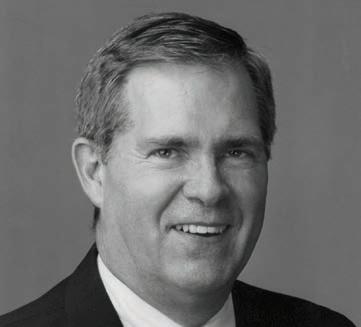
11 minute read
Dr. Kathleen BoeszeBattaglia Q&A
How can students go about finding a research project? There is the summer research program and an honors program here at the School. Penn does a very good job of making research accessible to students. If a student wants to do it, they certainly have many opportunities and labs to experience a research environment. I encourage anyone interested to participate in a research project at PDM. There is a new Associate Dean for Graduate Studies and Student Research who can help connect students with research projects, Dr. Esra Sahingur. Research also enables you to develop critical thinking and interpretation of the literature. A dentist will be faced with new treatments, devices, and materials used in patient treatment. How do you evaluate them? Research teaches you how to examine and interpret data. There is no better way to learn how to critically evaluate the literature and to learn how to make decisions on whether a product or technique may be good for patients. I think a research experience has so many valuable components that if students do not take advantage of it, they will be missing something valuable. I also make a suggestion that students think about different careers that they can participate in, including careers that involve teaching or research, which are compatible with being a clinician. A dental student has many opportunities and many paths that they can take.
DR. KATHLEEN BOESZEBATTAGLIA
Professor, Dept. of Basic & Translational Sciences Research Honors Program Director
Currently, Dr. Battaglia’s lab is focused on understanding the molecular mechanism of age-related degenerative diseases by deciphering alterations in metabolism.
What qualities do you consider valuable in a researcher? As a traditionally trained biochemist/biophysicist, I would have answered that researchers must develop highly qualitative assessments for basic processes. Over the years, my viewpoint has evolved with increased emphasis on understanding and developing viable therapeutics for disease processes. Overall, this requires a researcher who bridges basic concepts with clinical realties. Ultimately, some of the best researchers are both creative and think outside the box, and have the organization skills to persevere with well-designed studies.
What was the most difficult time in your research? A research career is mostly characterized by both high and lows. Challenges do come in all forms; commitment to family, lack of infrastructure support, personnel struggles, and general difficulty in work life balance. Perhaps the most challenging for me was making time for my two daughters when they were young, and juggling the demands of scholarship for tenure. I had a 4-year-old at home and was pregnant with my second child my tenure year. There was no trick — just a lot of 5 a.m. mornings, kids and toys in my office, and evening mealtimes which I tried not to miss. As for research, it worked; I collaborated and have always enjoyed answering the question, “I wonder why it works that way.”
What advice do you have for students interested in research? Pursue your passion, find a lab that has the type of work environment and project that you want to spend your non-existent “extra” time in. Some important things are to keep the balance — many experiments you think failed are really opening up a new line of study — look at the failures in that light. Rely on your basic common sense; it is good to ask yourself if what you are doing make sense. Is there a better way to do this particular experiment or a better way to test my hypothesis? Once in a lab group, find mentors. Look at what these individuals do when they get stuck in their project, and see how they present their ideas.
DR. RICHARD DOTY
Professor of Psychology in Otorhinolaryngology: Head and Neck Surgery Smell & Taste Center, University of Pennsylvania Medical Center

B.S. in Psychology/Biology at Colorado State University; M.A. in Experimental Psychology: Psychophysics at California State University in Conjunction with National Aeronautics & Space Administration (NASA); Ph.D. in Comparative Psychology/Zoology at Michigan State University. Postdoctoral work in Behavioral Endocrinology at the University of California, Berkeley.
What is your current research project? I have a number. Back in 1980 we were the first NIH-funded Smell and Taste Center in the United States. Our mission was research, patient care, and education. I’ve been with the Center since that time and its Director since 1990. We currently do a lot of research in the areas of neurology and neurodegenerative disease. We are particularly interested in the relationship of central brain cholinergic function and olfaction. Some of our past projects involved Alzheimer’s disease, and its connection to olfaction. Alzheimer’s, like Parkinson’s, is a disease in which smell loss can be a very early sign. We also have research projects on taste. For example, Dane Kim (D’22) has completed a project on third molar extraction which will be submitted for publication soon. Such extraction can impact the lingual nerve of some people. His interesting finding is that persons in our clinic database, whose extraction occurred many years ago, actually are statistically more sensitive to tastes. Another taste area we have focused on involves sensitivity to the bitter taste of phenylthiocarbamide (PTC), of which about 70% of the population can perceive. So-called “bitter taste” receptors are actually found throughout the body, e.g., in the gut, brain, gonads, and pancreas, where they serve non-taste functions. Interestingly, tasters of PTC are less likely to contract rhinosinusitis, since they possess more “bitter” receptors in the nose that impact ciliary clearance and secretion of antibacterial agents, such as nitric oxide. I think one of the things that we are best known for is the development of the University of Pennsylvania Smell Identification Test (UPSIT; commercially known as the Smell Identification Test). This reliable quantitative “scratch and sniff” test has been translated into over 30 languages and is self-administered. The development of the test has resulted in massive amounts of research in aging and many diseases, including numerous neurodegenerative diseases, schizophrenia, and systemic disorders. It is gratifying to have developed the first and most widely used commercially practical smell test that has led to new avenues of understanding brain function.
What qualities do you admire or think are important in researchers? I think their desire to do high-quality research is high on the list. It’s a bit like Picasso. When he started he used to do little things and never got to the great masterpieces. So many of us go through a phase when we just propose things to do research on and that’s fine at certain stages of our careers, but I think, ultimately, it’s whether the research is novel enough to make a meaningful contribution. The ideal, albeit rare, study is one that breaks or shifts a paradigm. Those are the ideas that ultimately shape things. So in order to know what’s important to do, you need to know the field very well. Then you can put into perspective what the next steps should be. That’s a very important aspect of research and that comes with experience. It’s very hard to judge a paper if you don’t know that field, or are not immersed in it or trained in it. You try to form interdisciplinary relationships with other scientists, because they know their fields and they typically don’t know your field. Collaboration is a big player. If you can meld specific skills of different groups to focus on a problem, then that’s ideal. Interdisciplinary research can shed in-depth knowledge on a problem. Hopefully what comes out are advances that will benefit all creatures on this planet, not just humans.
What was the most difficult time in your research? How did you get over it? Well sometimes success in research is not a given — you get an idea and you test it. Sometimes you’re right and sometimes you’re wrong. Generally if you have enough experience, you’re more often right than wrong. But certainly there are times where you have an idea and you test it and it doesn’t turn out like you expect. At the same time, often you’re looking for one thing and by serendipity, discover something else. For example, when we developed the UPSIT we didn’t know what to expect and we were just excited about testing people. As it turns out, this simple test opened up new avenues of understanding. Because I’m not wedded to, or particularly trained,
in certain fields of medicine, I am open to trying crazy things. For example, we tested people with myasthenia gravis (MG), which is classically considered to be an autoimmune disorder and to not have a central nervous system association. We found that people with this disease have the same degree of smell loss as people with Alzheimer’s and Parkinson’s. We had a hard time getting that research published, but it was published and now has been replicated several times. Many people thought that this wasn’t possible. Unfortunately, the field of olfaction has been underappreciated, almost mocked. You’re studying smell, what’s wrong with you? I guess we associate smell with bad things but this is clearly changing, at least in academia. But in the case of MG, we discovered something that is very important and still needs to be followed up on. Our findings suggest that a central nervous system cholinergic deficit associated with smell loss is present in this disease. This and other observations have led to the hypothesis that smell function is affected in neurodegenerative diseases by central cholinergic circuits. It was fortunate that the test that I invented has been given to subjects suffering from well over 30 different kinds of neurodegenerative diseases. This has led to the idea that the different degrees of smell loss observed among such diseases may reflect differing degrees of damage to forebrain cholinergic circuits. Of course in Alzheimer’s, acetylcholine is a big player regarding memory problems, but acetylcholine is also a pretty big player in other diseases. However, there is a tendency, I think, for people to focus only on a single disease at a time and to miss common connections among diseases that may aid in understanding the underlying pathologies.
Any advice for students who are interested in research? Not everyone is cut out for doing research, but to find out you must jump into the activity. It is key that students who have an interest find projects that truly fascinate them and they enjoy. Finding a mentor early in your career can be very helpful. I think there’s a sense that if you accomplish things in research, you’re educating a larger audience by your publications. It is more than giving a lecture to a class — you’re giving a lecture to an entire world in a way. So when you publish your research findings, you’re having a major impact on others. It’s very fulfilling, but it can also be disappointing at times as there is a lot of grunt work in collecting and analyzing data. Eventually research funding must be sought and this can be a grueling experience. You have to be able to accept rejection both in terms of grant submissions and publications. Like your first term paper, a lot of red marks can come back but you learn from such marks. Research is constantly dealing with acceptance and rejection. You can go through periods of not having grants and periods of having grants, and it’s great. Today, researchers have to be astute enough to write grants and you have to market their findings and ideas. I think that aspect of research is sometimes the most difficult. I view research as a type of art. In visual art, for example, you choose your medium, whether it be clay, acrylics, or watercolor. In science, you do the same thing. You choose your topic, medium, and whatever tools are needed to produce the published product. The way you make your graphs, the way you communicate information — it’s all art. Art and science are intertwined because they have the same elements of creativity, execution, and all of the elements of harmony. Getting back to advice to young people, I reiterate the need to expose yourself to a field and learn as much about it as you can. You will then spot things — oh boy, it would be interesting to do this, no one seems to have done that. That forms the genesis of a career. Find somebody who’s doing something in an area that you are interested in — and that’s what graduate school is basically. You choose a mentor for your PhD thesis based upon what they study. I had a lot of interests, but I ended up doing human psychophysics with NASA, subsequently doing animal research for my PhD, then continued animal research, and eventually got back into human work. I found animals fascinating because, for many, smell is their primary sensory modality. Do they think and dream in terms of smells? These are questions it would be nice to ask your dog.









